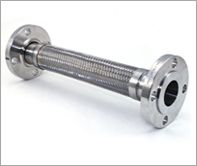Technology devices have become essential tools in daily life. Yet many users unknowingly damage their phones and laptops through poor habits. These mistakes often lead to expensive repairs that could have been avoided with basic preventive care. Understanding proper device maintenance prevents costly surprises and extends technology investments significantly. The statistics reveal alarming trends in device damage rates across Australia.
Understanding Device Vulnerabilities
Modern devices face constant threats from drops, moisture, and electrical surges. Mac screen replacement costs can reach hundreds of dollars when accidents happen. The fragile nature of today’s slim devices makes them particularly vulnerable to impact damage and environmental factors. Manufacturing trends toward thinner profiles sacrifice durability for aesthetics and portability. Component miniaturisation increases sensitivity to physical stress and environmental changes.
Professional repair services see the same problems repeatedly. Mobile phone repairs Sydney centres report that most damage stems from preventable user habits. Cracked screens, battery failures, and water damage dominate repair requests across the industry. Technicians estimate that proper preventive care could eliminate up to seventy percent of common repairs. User education remains the most effective strategy for reducing device damage incidents.
Essential Protection Strategies
Physical Protection Methods
Protective cases serve as the first line of defence against drops and impacts. Quality cases absorb shock and distribute force away from vulnerable components. Screen protectors prevent scratches and reduce the risk of cracks during minor impacts. Military-grade cases offer maximum protection but add bulk and weight to devices. Material selection affects protection levels and user experience during daily activities.
Temperature extremes pose significant risks to electronic components. Leaving devices in hot cars or cold environments can damage batteries and internal circuits. Room temperature storage protects sensitive components from thermal stress and expansion damage. Extreme temperatures can cause permanent damage within minutes of exposure. Thermal management becomes critical during summer months and winter storage periods.
Smart Charging Practices
Charging habits directly impact battery longevity and device safety. Using original chargers ensures proper voltage delivery and prevents electrical damage. Cheap aftermarket chargers often lack safety features and can cause fires or component failure. Certification marks indicate compliance with safety standards and quality control measures. Electrical surge protection adds another layer of safety during charging sessions.
Overnight charging creates unnecessary heat buildup that degrades battery cells. Removing devices from chargers once they reach full capacity prevents overheating. Battery health deteriorates faster when devices remain plugged in constantly. Smart charging accessories automatically disconnect power when batteries reach optimal levels. Heat dissipation during charging affects long-term battery performance and device lifespan.
Software Maintenance Essentials
Regular software updates patch security vulnerabilities and fix performance issues. Delayed updates leave devices exposed to malware and system instabilities. Automatic update settings ensure devices receive critical patches without user intervention. Security researchers discover new vulnerabilities weekly that require immediate patching. Update timing affects device performance during critical work or entertainment periods.
Storage management prevents system slowdowns and crashes. Full storage drives force devices to work harder and generate excess heat. Regular cleanup of photos, videos, and unused apps maintains optimal performance levels. Cloud storage services automatically manage local storage by archiving older files. Storage optimization tools help identify large files and duplicate content consuming space.
Environmental Awareness
Moisture represents one of the biggest threats to electronic devices. Bathrooms, kitchens, and outdoor environments expose devices to humidity and liquid damage. Water damage often requires complete component replacement rather than simple repairs. Humidity sensors in modern devices trigger protective shutdowns when moisture levels exceed safe limits. Waterproof ratings provide guidance but do not guarantee complete protection from moisture.
Dust accumulation blocks ventilation ports and causes overheating issues. Regular cleaning with compressed air removes debris from speakers, charging ports, and cooling vents. Clean devices run cooler and experience fewer hardware failures. Professional cleaning services use specialised tools to reach internal components safely. Air quality affects dust accumulation rates and cleaning frequency requirements.
Handling Best Practices
Proper grip techniques reduce the likelihood of accidental drops. Two-handed operation provides better control during use. Avoiding phone use while walking or in crowded areas prevents collision damage. Ergonomic accessories improve grip security and reduce hand fatigue during extended use. Multitasking while using devices increases accident risks and potential damage scenarios.
Screen cleaning requires gentle techniques and appropriate materials. Harsh chemicals and abrasive cloths can damage protective coatings. Microfibre cloths and distilled water safely remove fingerprints and smudges without causing scratches. Commercial screen cleaners contain specialised formulas that dissolve oils without damaging displays. Cleaning frequency depends on usage patterns and environmental exposure levels.
Data Protection Habits
Regular backups protect against data loss during hardware failures. Cloud storage services automatically sync important files and photos. Local backups provide additional security for critical documents and media files. Multiple backup locations ensure data recovery even when primary systems fail. Backup verification ensures stored data remains accessible and uncorrupted over time.
Password management prevents unauthorised access if devices are lost or stolen. Strong passwords and biometric authentication add security layers. Remote wipe capabilities allow users to protect personal data remotely. Two-factor authentication provides additional security for sensitive accounts and applications. Security awareness training helps users recognise phishing attempts and social engineering attacks.
Warning Signs to Watch
Device behaviour changes often indicate developing problems. Unusual heat generation, rapid battery drain, and performance slowdowns require immediate attention. Early intervention prevents minor issues from becoming major repairs. Performance monitoring apps track system health and identify potential problems automatically. Diagnostic tools help distinguish between software issues and hardware failures.
Physical damage inspection should occur regularly. Loose buttons, charging port issues, and speaker problems worsen over time. Professional diagnosis catches problems before they cause complete device failure. Visual inspections reveal hairline cracks and connector wear that precede major failures. Documentation of device condition helps track degradation patterns over time.
Professional Maintenance
Annual professional cleaning removes internal dust and debris buildup. Technicians can identify potential problems before they cause failures. Preventive maintenance costs less than emergency repairs and extends device lifespan significantly. Professional services use specialised equipment unavailable to typical consumers. Maintenance schedules depend on usage intensity and environmental exposure factors.
Battery replacement schedules depend on usage patterns and charging habits. Most batteries require replacement after 2-3 years of regular use. Professional battery installation ensures proper calibration and safety compliance. Battery health monitoring apps track degradation and predict replacement timing. Replacement timing affects device trade-in values and upgrade decision making.
Cost-Benefit Analysis
Prevention costs significantly less than repairs or replacements. Quality protective cases cost under fifty dollars compared to hundreds for screen repairs. Smart habits save money while maintaining device functionality and appearance. Total cost of ownership includes protection, maintenance, and eventual replacement expenses. Financial planning for device protection yields substantial long-term savings benefits.
Insurance options provide additional protection for expensive devices. Comprehensive coverage includes accidental damage and theft protection. Comparing insurance costs against repair expenses helps determine the best protection strategy. Deductibles and coverage limits affect the practical value of insurance policies. Risk assessment helps determine appropriate protection levels for individual usage patterns.
Advanced Protection Techniques
Environmental monitoring helps identify risk factors in daily routines. Temperature and humidity tracking apps alert users to dangerous conditions. Location-based reminders prompt protective actions in high-risk environments. Smart home integration automates device protection during weather events. Technology solutions enhance human awareness and decision-making capabilities.
Ergonomic accessories reduce physical stress on devices during extended use. Adjustable stands prevent overheating during video calls and streaming sessions. External keyboards and mice reduce wear on built-in components. Cooling pads help laptops maintain optimal operating temperatures. Accessory selection affects both device longevity and user comfort levels.
Smart device habits form the foundation of long-term technology ownership. Simple practices like using protective cases, maintaining proper charging routines, and performing regular software updates prevent most common problems. These habits require minimal effort but deliver substantial savings in repair costs and device longevity. Environmental awareness and proper handling techniques further reduce damage risks significantly. Professional maintenance and strategic protection investments maximise device lifespan and performance reliability. Start implementing these protective measures today to keep your devices running smoothly for years to come.
Featured Image Source: https://img.freepik.com/free-photo/portrait-shocked-young-man-showing-his-broken-smartphone_23-2149375008.jpg






